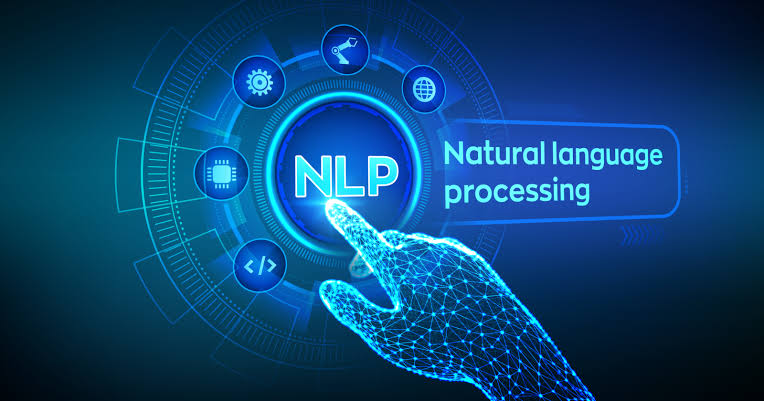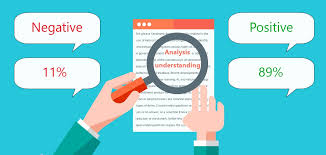In today’s digital era, the ability to interpret human language through computers is not just fascinating but also immensely practical. At the heart of this technological marvel is Natural Language Processing (NLP), particularly in the realm of Sentiment Analysis. This blog post aims to explore NLP’s pivotal role in Sentiment Analysis. We will uncover the mechanics behind NLP, delve into the specifics of Sentiment Analysis, and discuss their intersection. Furthermore, we will provide hands-on Python examples to illustrate these concepts in action, discuss advanced techniques, and address ethical considerations in this field.
What is Natural Language Processing?

Natural Language Processing, a subset of artificial intelligence, bridges the gap between human language and computer understanding. It involves several key processes:
Tokenization: Breaking down text into smaller units (tokens), such as words or phrases.
Stemming and Lemmatization: Reducing words to their root form. Stemming does this through heuristic processes, while lemmatization considers the word’s context and part of speech.
Part-of-Speech Tagging: Identifying the grammatical groupings of each word (nouns, verbs, adjectives, etc.).
Named Entity Recognition (NER): Identifying and classifying key information in text into predefined categories like names of people, organizations, or locations.
NLP has a broad range of applications, from voice-activated assistants and online customer support to more sophisticated uses like sentiment analysis in social media or text interpretation in legal documents.
Sentiment Analysis Explained

Sentiment Analysis, a specialized application of NLP, involves analyzing text to determine the writer’s feelings or opinions. It categorizes sentiments as positive, negative, or neutral, and is increasingly being utilized in various industries for brand monitoring, product reviews, and customer feedback.
This process not only involves identifying explicit expressions of sentiment but also inferring underlying tones and attitudes. Sentiment Analysis algorithms must navigate complexities like sarcasm, irony, and context-specific language to accurately interpret human emotions.
The significance of Sentiment Analysis lies in its ability to transform subjective, qualitative data into quantitative data, which can be analyzed systematically to derive insights about public opinion, consumer behavior, and market trends.
The Intersection of NLP and Sentiment Analysis

The intersection of NLP and Sentiment Analysis represents a harmonious blend of linguistic theory and computational technology. In this fusion, NLP provides the foundational tools for processing and understanding human language, which is essential for automated Sentiment Analysis.
The typical workflow in NLP-powered Sentiment Analysis includes:
- Data Collection and Cleaning: Gathering relevant text data from various sources and preprocessing it (removing noise, handling missing data).
- Feature Extraction: Techniques like Bag of Words or TF-IDF are used to convert text into a format that machine learning algorithms can understand.
- Model Training and Application: Machine learning models are trained on labeled datasets to recognize and categorize sentiments.
Despite advances, challenges remain, particularly in accurately interpreting complex language constructs such as idioms, slang, and varying dialects.
Building a Simple Sentiment Analysis Tool with Python
To better understand the practical application of NLP in Sentiment Analysis, let us build a basic tool using Python. We will use the NLTK library, a popular NLP toolkit in Python:
python
import nltk
from nltk.sentiment import SentimentIntensityAnalyzer
from nltk.tokenize import word_tokenize
# Sample text
text = “I find the new movie surprisingly entertaining, despite some flaws.”
# Tokenization
tokens = word_tokenize(text)
# Sentiment Analysis using NLTK’s VADER
nltk.download(‘vader_lexicon’)
sia = SentimentIntensityAnalyzer()
sentiment = sia.polarity_scores(text)
print(f”Sentiment: {sentiment}”)
This script uses NLTK’s VADER (Valence Aware Dictionary and sEntiment Reasoner) tool, specifically designed for Sentiment Analysis. VADER is useful for handling texts with mixed sentiments and can effectively interpret emojis and slangs.
Utilizing Machine Learning in NLP for Sentiment Analysis
Incorporating machine learning into NLP elevates Sentiment Analysis capabilities. Algorithms like Naive Bayes, Logistic Regression, and Support Vector Machines (SVM) are commonly employed. We shall demonstrate a sentiment classifier using Python’s Scikit-learn library:
python
from sklearn.feature_extraction.text import TfidfVectorizer
from sklearn.naive_bayes import MultinomialNB
from sklearn.pipeline import make_pipeline
from sklearn.model_selection import train_test_split
# Sample data
data = [“I love this phone”, “Hate the new update”, “Best service ever”, “Worst experience”, “Absolutely fantastic”]
labels = [1, 0, 1, 0, 1] # 1 for positive, 0 for negative
# Train-Test Split
X_train, X_test, y_train, y_test = train_test_split(data, labels, test_size=0.25, random_state=42)
# Building a Text Classification Pipeline
model = make_pipeline(TfidfVectorizer(), MultinomialNB())
model.fit(X_train, y_train)
# Testing the Model
predicted = model.predict(X_test)
print(“Predicted Sentiments:”, predicted)
This example demonstrates a basic pipeline for text classification, employing TF-IDF for feature extraction and a Naive Bayes classifier for sentiment prediction.
Leveraging Deep Learning in Sentiment Analysis
Deep learning, with its ability to process large and complex datasets, has significantly enhanced NLP’s capabilities. Neural networks, especially Recurrent Neural Networks (RNNs) and Long Short-Term Memory (LSTM) networks, are adept at processing sequential data like text, making them well-suited for Sentiment Analysis.
These models can capture the contextual relationships between words, allowing for a more nuanced understanding of sentiments. For instance, an LSTM model can remember the sentiment expressed early in a sentence and how it influences the meaning of the words that follow.
Exploring Advanced NLP Models
Recent advancements in NLP have introduced models like BERT (Bidirectional Encoder Representations from Transformers) and GPT (Generative Pretrained Transformer), which represent a leap forward in understanding context and subtleties in language. These models, trained on vast amounts of data, excel in tasks that require a deep understanding of context, making them ideal for complex Sentiment Analysis tasks.
Implementing these models typically involves fine-tuning a pre-trained version on a specific dataset, allowing the model to adapt its understanding to the nuances of the task at hand.
Ethical Considerations and Challenges
As with any AI technology, NLP and Sentiment Analysis raise several ethical concerns. Issues of privacy, consent, and potential biases in algorithmic decision-making are paramount. These challenges are exacerbated by the subjective nature of sentiment and the difficulty in ensuring that algorithms interpret language fairly and accurately across different cultures and contexts.
It is crucial to approach these technologies with a commitment to ethical standards, transparency in algorithmic processes, and a continuous effort to mitigate biases.
Conclusion
The fusion of NLP and Sentiment Analysis offers a powerful tool for understanding and quantifying human emotions in text. From crafting simple Python tools to leveraging sophisticated machine learning and deep learning models, the potential applications are vast and varied. Despite the challenges and ethical considerations, the future of NLP in Sentiment Analysis is bright, promising more accurate, nuanced, and context-aware interpretations of language. As we continue to innovate in this field, it’s important to balance technological advancement with responsible and ethical usage.






Add comment